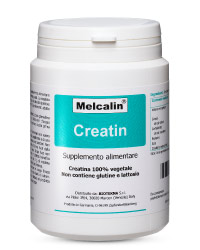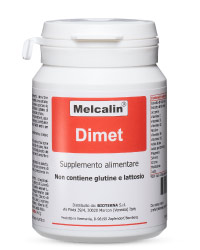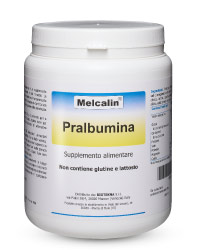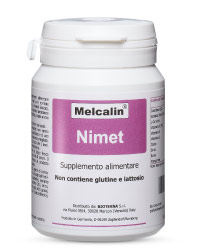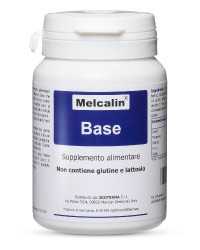Introduction
Tiredness and chronic fatigue, loss of strength, cramps, fibromyalgia, arrhythmias, low digestibility and gastric emptying, alternate bowel, mood disorders, irritability, “functional bipolarity” are some of the medically unexplained symptoms (MUS) that our body can manifest when the transmission of nerve impulses is altered due to variations in ionic concentrations. In particular, the changes concerning potassium and magnesium are crucial in causing imbalances in nerve conduction that can occur with symptoms of equipment to load muscle, heart, nervous and gastrointestinal
Potassium is an electrolyte that the body needs to perform a number of functions including the regulation of fluid and electrolyte balance, nerve transmission, converting blood sugar into glycogen (Gly)41 and the protein synthesis, while the magnesium is essential for many activities including enzymatic reactions, the maintenance of electrolyte balance, energy metabolism and cell proliferation.
The two minerals are important both when viewed individually or when they are analysed together. There is a relationship between their concentrations: numerous studies show that a deficiency of magnesium is connected to a shortage of potassium29 and that isolated potassium balance disorders do not produce alterations of the magnesium homestasis while the depletion of magnesium produces a secondary depletion of potassium.
The ratio K / Mg (BIA-ACC) represents the ratio of the two ions and is a prognostic indicator of the functional capacity of the action potentials: the more its value differs in negative from 4.8 (ideal value of Melcalin MGK, which represents the maximum activation of the action potentials), the more both the membrane potential and then the generation of action potentials in excitable tissues will be altered.
It is therefore essential to restore or to maintain a proper potassium / magnesium ratio in order to maintain the membrane polarization values within the physiological limits and consequently avoid the alteration of the action potentials whose variation is manifested by MUS within excitable tissues (muscle, heart, gastro-intestinal and nervous).
Potassium
– Potassium is an ion mainly present in the intracellular fluids in which approximately 98% of it is distributed (ICK-intracellular potassium)41 while the remaining 2% is contained in the extracellular fluids (ECK-extracellular potassium)41; this segregation is maintained by the sodium-potassium pump, which is really important for the molecules against electrochemical and concentration gradient in order to pass through the cell membrane. The different concentration gradient intra and extra cellular is necessary for cell polarization which influences various processes such as nerve impulses and the contraction of the muscle cells (including cardiac muscle), therefore, relatively small changes of the serum concentration of this ion may have significant clinical manifestations. In adults, the minimum value of potassium is around 2,500 mmol (TBK- total potassium)41.
Inside the cells potassium is needed for normal cell growth and protein synthesis; most of the intracellular potassium is contained within the muscle cell, therefore, the potassium is proportional to the total body lean mass body1 and in particular to muscle mass (FFM Skeletal Muscle)41.
It is clear that the causes of potassium loss are linked to those situations in which you assist in loss of lean body mass (undernourishment “starvation”, sarcopenia, cachexia, physical inactivity, inflammatory diseases, kidney and bowel diseases and cancer).
Extracellular Potassium and action potential
The extracellular potassium is of fundamental importance in maintaining the efficiency of the sodium-potassium pump which is needed to retain the electric charge within the cell, particularly important function for nervous muscle cells.
It has a central role in the transmission of nerve impulses, in the control of muscle contractions and blood pressure, in the maintenance of the membrane potential and the generation of action potentials in excitable tissues.
The loss of potassium from the intracellular and from the extracellular environment (EK)41 leads to an alteration of the polarization of the potential of cell membranes, lowering the excitability of the tissues and altering the functionality of the neuromuscular, cardiac and gastrointestinal systems, with the consequent onset of the following medically unexplained symptoms (MUS):
- muscular system: fatigue, loss of strength, cramps, fibromyalgia;
- cardiac system: arrhythmias, tachycardia;
- Gastro-intestinal system: swelling, acidity, low digestibility, delayed gastric emptying, constipation, alternating alvus, irritable bowel syndrome;
- nervous system: mood disorders, irritability, “bipolar functional” and depression.
In addition, the potassium is essential for the conversion of blood sugar into glycogen (Gly) which is the form in which glucose vienne accumulated in the muscles and in the liver (gly or glycogen mass) 41; a reduction in deposits of glycogen causes the increase of fatigue and muscle weakness3, also its reduced “storage” determines an increase in the free glycogen (glycogen-Gly Free Shipping)41 that leads to lipogenesis and thereby increase the fabric fat in particular there has been a accumulation of abdominal visceral fat39.
Action potential Alterations
Changes of the ratio of the intra-extracellular potassium determine a movement of the resting electric membrane potential (REMP), and they also tend to prolong the action potential caused by the extension of the delayed repolarization phase primarily affecting potassium currents.
The loss of intracellular potassium, through the disturbance of the balance Ki / Ke, leads to cellular hyperpolarization, to an increase of activation times and to cellular depolarization. Theoretically hyperpolarization of a single cell type should not generate arrhythmia because it implies a departure of the REMP from the activation potential. Actually the hyperpolarization favours phenomena of return. At the cardiac level there are different cell types (nodal, of conduction and muscular) and the different polarization of the cellular elements creates a dyssynchrony and triggers a mechanism which is the basis of the genesis of re-entry circuits.
The reduction of the intracellular potassium thus represents an arrhythmogenic risk factor; to confirm this, a study has documented that arrhythmic patients on dialysis had a lower value of potassium intraerythrocytic compared to not arrhythmic patiens. More recently it has been shown that the high potassium loss that occurs during standard hemodiafiltration affects the cellular electrical potentials, resulting in a greater arrhythmogenic risk in patients on dialysis43.
The electrical stability of the heart, in fact, is more sensitive to the extracellular potassium concentration (ECK-extracellular potassium)41 compared to the intracellular: an ischemic myocardium loses potassium in the extracellular space within a few seconds and the cell becomes depolarized40.
Changes in extracellular potassium may occur even at normal conditions as a result of taking medications such as diuretics, at conditions of tissue acidosis, catabolism of lean body mass, systemic chronic inflammatory conditions; the phenomenon that occurs is similar to that described above: the rest membrane potential, which under physiological conditions is of -84 mV, increases and can reach approximately -67 mV, however, in transmembrane potential above -70 mV channels of inactivation of sodium are closed, making the tissue as non-excitable14. Thus, increases in the values of extracellular potassium (ECK), alter the threshold stimulation and also the excitation mechanism; this condition seems to be caused by the opening of ATP dependent channels 22,23,42.
Magnesium
Magnesium is the second most abundant intracellular cation, about half of the total magnesium (TBMg- total magnesium) 41 in the body is in the soft tissues (STM-minerals of the soft tissues)41, the other half is in the bone (about 60%) and less than 1% in the extracellular fluid (this concentration is important for the transmission of nerve impulses and for the control of muscle contractions). Magnesium is essential for many enzymatic activities, in fact, is implicated in the mechanisms of regulation of 300 different enzyme complexes, it is also important for the maintenance of electrolyte balance and is of fundamental importance for normal neuromuscular function as well as the transport of calcium and potassium, is also required to activate the sodium-potassium pump, energy metabolism and cell proliferation12,44.
Absorption
It is absorbed by the small intestine and the serum concentration is controlled by renal excretion.
Magnesium deficiency is extremely common and is connected to a series of factors that reduce the absorption or increase the secretion of magnesium; the causes may be related to an increased renal excretion (use of diuretics, diabetes, antibiotics, oral contraceptives, alcohol, hyperthyroidism, kidney disease), to heart failure, to malabsorption syndrome (chronic diarrhoea, malabsorption, or bypass / bowel resection), excessive sweating, digitalis toxicity.
The most common symptoms of magnesium deficiency include fatigue, weakness, tremors, confusion, irritability, insomnia, heart disease, impaired nerve conduction and muscle contraction, cramping and lower resistance to stress.
Magnesium deficiency and diseases
Low levels of magnesium increase the susceptibility of the organism to diseases such as heart disease, high blood pressure, kidney stones and depression: a study in the United States on subjects deficient in magnesium have shown that these individuals were more prone to conditions such as atherosclerosis, myocardial infarction, hypertension, cancer, kidney stones, premenstrual syndrome and psychiatric disorders4.
Other research focused to demonstrate the effectiveness of magnesium in the treatment of arrhythmias, severe asthma and migraine; despite limited evidence its use is accepted as standard therapy for problems of constipation and dyspepsia2,3,5,6,7. Therefore those who are particularly interested in the benefits of magnesium are those who have: cardiovascular disease (angina, cardiac arrhythmias, heart disease, heart failure, hypertension), stroke, diabetes, low blood sugar, low HDL levels, osteoporosis, asthma, fatigue, fibromyalgia, kidney stones, migraines, PMS, dysmenorrhea.
Magnesium and Action Potential
A magnesium depletion can produce acute electrocardiographic changes in the cardiac muscle, in fact, hypomagnesaemia is implicated in severe ventricular arrhythmia10. Studies show that the ion has depressive action on the heart: an induced increase in the concentration of magnesium ions causes a reduction in sinus rate.
In vivo experiments have shown that an increase in the concentration of magnesium causes hypotension due to vasodilatation while a decrease is often associated with an increase in blood pressure caused by vasoconstriction. These data suggest that magnesium may influence the excitation-contraction coupling in vascular smooth muscle.
The effects of an increased extracellular concentration of magnesium on the mechanical and electrophysiological properties of smooth muscles have been studied: an increase in the extracellular magnesium has reduced both the amplitude of the contractions electrically induced and spontaneous contractions. An increase in the concentration of magnesium leads to the regulation of the inflow of calcium through voltage-dependent channels and adjusts so muscle contractility11.
The importance of Magnesium in Potassium control (Ratio K/Mg)
The two minerals are important when viewed individually and when analyzed together, in fact there is a relationship between the concentration.
Evidence suggests that a deficiency of magnesium corresponds to a potassium deficiency29: hypomagnesaemia connects to the occurrence of hypocalcemia and hypokalemia; hypokalemia is a common occurrence in patients with hypomagnesemia and occurs with a frequency of 40 to 60% of cases. This appears to result from an inability of the cell to maintain normal intracellular concentration of potassium perhaps due to an increase in membrane permeability to potassium and / or inhibition of the Na-K ATPase; as a result, the cells lose potassium that is secreted in the urine. The depletion of potassium into cells requires the correction of magnesium deficiency.
Isolated disorders of potassium balance not produce alterations of the magnesium homeostasis, on the contrary, magnesium depletion produces a secondary potassium depletion.
With BIA-ACC is possible to evaluate the values of extracellular potassium and magnesium and the ratio K / Mg namely the relationship between the two ions.
Ratio K / Mg is a prognostic indicator of the functional capacity of action potentials, its ideal value is equal to 4.8 (see paragraph 4.6-5)and is the highest activation of action potentials (see Melcalin MGK). The maintenance of the ratio K / Mg is fundamental for the transmission of nerve impulses, for the control of muscle contractions, of blood pressure, for the maintenance of the membrane potential and the generation of the action potential in excitable cells. The more we deviate from the default value, and greater will be the perception of medically unexplained symptoms (MUS): a linear loss ratio K / Mg with values less than 4.5 leads to a strong presence of medically unexplained symptoms (MUS) a load of excitable tissues.
Affected systems are therefore:
- Muscular: chronic fatigue, loss of strength, cramps, fibromyalgia;
- Cardiac: arrhythmia, tachycardia;
- Gastro–intestinal: bloating, acidity, low digestibility and gastric emptying, constipation, alternating bowel and irritable bowel;
- Nervous system: mood disorders, irritability, “bipolar functional” and depression.
Magnesium and Potassium: Application Areas
Potassium and muscle fatigue
As described above, potassium is essential for the conversion of blood sugar into glycogen(Gly)41; reduced accumulation of glycogen causes increased fatigue and muscle weakness.
Cardiovascular: hypertension
Potassium and magnesium are helpful in disorders of the cardiovascular system: the potential of a potassium-rich diet to lower blood pressure are derived, at least in part, from a natriuretic activity of the ion that promotes the renal excretion of sodium and decreases the negative impact of sodium-rich diets high. In addition, the modest increase in serum potassium obtainable with a potassium-rich diet has an effect on the hyperpolarization of vascular endothelium, the net effect is to increase the production of endothelial nitric oxide while superoxide production is suppressed. Epidemiological studies show that an increased intake of potassium can reduce the risk of heart attack and especially stroke 13.
Other studies show an inverse relationship between blood pressure and potassium intake and this effect appears to be greater in people with hypertension than in subjects with blood pressure in the normal range14.
The magnesium appears to be useful in the treatment of hypertension: small changes in magnesium levels can have significant effects on cardiac excitability, on vascular tone, on contractility and on heart responsiveness. Most epidemiological and experimental studies have shown an inverse association between magnesium concentrations and blood pressure, so much that magnesium supplementation is recommended in patients with hypertension taking diuretics, with resistant or secondary hypertension8,15.
Another study shows that the level of intracellular magnesium deficiency in women with angina is closely related to the frequency of chest pain 16.
These improvements should add considerations on the importance of the two minerals in modulating the action potentials.
Neurological Problems
Magnesium plays an important role in the conduct of the nervous system; magnesium deficiency is a well-known risk factor for the development of neuropathology including depression: it has been demonstrated that is possible to have a quick recovery (less than 7 days) from depressive symptoms with magnesium intake. Even patients with head injuries, headaches, suicidal ideation, anxiety, irritability, insomnia, postpartum depression, loss of short term memory have benefited from taking such ion17. The magnesium deficiency disorders can be explained by the fact that its deficit causes an opening of the calcium channel N-methyl-D-aspartate (NMDA), causing neuronal damage and neurological dysfunction that can manifest as major depression. Oral administration of magnesium has led to effects comparable to those of anti-depressant drugs 8,9,18.
Even the most common states of anxiety are related to magnesium deficiency: there is a relationship between perturbation in the homeostasis of magnesium and pathological states of anxiety; magnesium deficiency causes increased transcription of the hormone releasing corticotrophin in the paraventricular hypothalamic nucleus which leads to an increase of ACTH, indicating a greater stimulation of the HPA axis.
Recent studies have demonstrated that the convulsive phenomena often coincide with increased concentrations of extracellular potassium: experimental results revealed a high concentration of extracellular potassium during epileptic seizures19.
Given these premises the effects of a high extracellular concentration of potassium on the interneurons of the hippocampus have been investigated: the increasing of such concentration followed an increase in the activity of discharge, indicating that the increase in the potassium observed during the crisis stimulated interneuronal activities and suggested the loss or impairment of neuronal inhibitory function20.
It also seems that high values of extracellular potassium may contribute to the pathophysiology of major neurological disorders, including cerebral ischemia and migraine21.
Disorders of the gastro-intestinal system
A diet poor of magnesium leads to an impact on the gastro intestinal system that occurs with alterations of the motility of the digestive tract and which may even reach the atony of the colon. Magnesium deficiency can lead to a significant increase in intestinal inflammation (assessed by the infiltration of neutrophils) and cause significant functional changes in local bodies and increased sensitivity to oxidative stress.
An integration of such ion is useful because it increases the release of cholecystokinin (CCK), which leads to accumulation of fluid and stimulates intestinal motility in the small intestine25,26,27,28.
Conclusions
– Magnesium is essential for the production of energy, the maintenance of electrolyte balance, for a correct neuromuscular function as well as for the homeostasis of calcium and potassium30,31,32,33,34,35,36: a magnesium deficiency is linked to a deficiency of potassium and calcium; therefore its integration is also useful for healthy bones and teeth.
Potassium intervenes in nerve transmission, in the regulation of the electrolyte balance, in the control of muscle contractility and blood pressure37,38.
The benefits of a combined supplementation of the two ions to all excitable tissues of the body (muscular, cardiovascular, nervous, gastrointestinal …) are evident.
It is noteworthy that the two ions are important not only individually but also as a whole: the ratio K / Mg gives us a value indicative of the activation of action potentials of excitable tissues, the more this ratio deviates in negative from the ideal value (4.8) (see paragraph 4.6 to 5), the greater the perception of MUS.
It is also necessary to bear in mind that there is a dependency of the potassium in respect of magnesium as a magnesium deficiency causes a secondary deficiency of potassium while a potassium deficiency is not linked to a magnesium deficiency.
Melcalin MgKis a food supplement to dissolve in water based on magnesium and potassium (the ideal intake is at mid-morning, before snack) in which the ratio of magnesium and potassium (1: 4.8) was evaluated instrumentally by measuring the recovery of the values of total potassium (TBK)41 and of extracellular potassium (ECK) on a sample of subjects (more than 1000 cases) with electrolyte disorders, MUS and related conditions.
This relationship between potassium and magnesium has the primary purpose of stabilizing the extracellular potassium to a maximum of 2% of the total potassium increasing cellular efficiency of excitable tissues. As a result, there will be an increase in the abundance of activation of the action potentials. The higher the frequency of action potential the greater the feedback of the central and peripheral nervous system with a physiological activation of the neurovegetative system (SNV).
The activation of action potentials, which for different causes appear to be altered due to a depolarization, leads therefore to considerable benefits to all excitable tissues (muscular, cardiac, gastro-intestinal and nervous).



